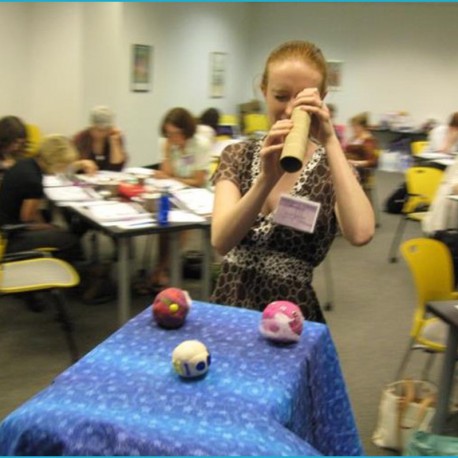 View larger
View larger
Strange New Planet
New activity
In this simulation of space exploration, participants plan and carry out five missions to a “planet” and communicate their discoveries to their family or a friend.
Open Activity
How-to Video
Teacher's Guide
Provides classroom connections, key concepts, connections to science standards, and additional resources.
-
Rating
-
Participants Enjoyed the ActivityParticipants Learned from This ActivityActivity Instructions Were Clear and Easy to FollowWould Recommend
Related Programming Resources
Reviews
Interactive fun!
I ran this program for kids in two groups ranging in ages from 3 to 12 and they all had a blast. The hands on activity of making the planet and then teaching them about the different ways we explore space really went over well.
Lots of fun
My group had a lot of fun with this activity. I had 6-8 year olds and they loved coming back to the group with their observations and trying to draw what they saw on their worksheets. Lots of good discussions were going on in the room about space exploration and finding life on other planets. I combined this with the activity Investigate the Insides for a really fun hour-long library program.
great for all ages!
We tried this at a librarian conference. Engaging demonstration of how space exploration works (and how it costs). Fun pretend planets to explore and discuss! This would be a great after school program.
A fun and inventive program choice!
I recently did this activity in two library programs, one for 1st-2nd graders, and the other for 3rd-4th, and it was a delight! Because of time and space constraints (we did not have enough room to do the distance viewing), I adapted the activity slightly, in that I had the children pretend to be astronauts and they "landed" on their planets. They were able to use their senses to evaluate the planets, and I gave them observation sheets to record what they saw. What colors were there, was there signs of life (Stickers!), what was the terrain like (I used hot glue to create a terrain, rather than modeling clay), was the planet heavy or light (golf balls hidden inside made for a weightier planet), was it a warm planet or a cold one (cold were put in a freezer beforehand)? For the older kids, we also had them write more in-depth observations and draw what they thought life might be like on their planet. Overall, it was a fun program and activity, and the information provided was really handy!



